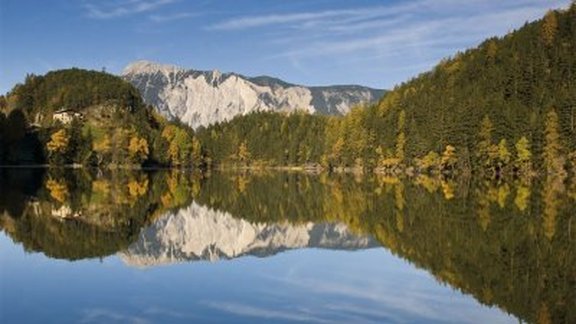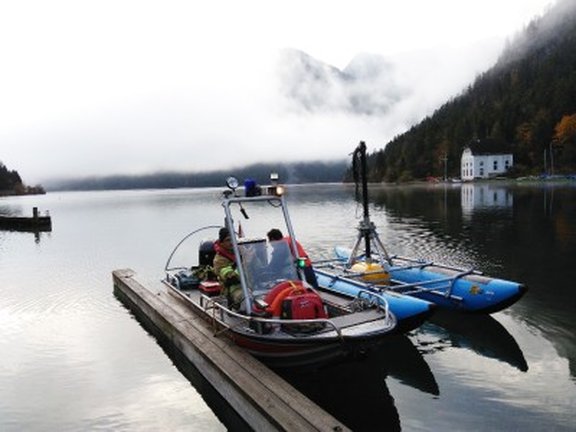Did strong earthquakes trigger the rockslide cluster in the Fernpass and Tschirgant regions (Tyrol, Austria)? Evidence from lacustrine sedimentary records (Tyrol on Shaky Slopes)
Funded by the Tiroler Wissenschaftsförderung (TWF)
PI: Jasper Moernaut
Co-PI: Michael Strasser
Project Member: Patrick Oswald

Large rockslides and rock avalanches represent natural hazards of typically long recurrence intervals and large impacts on society and Alpine ecosystems. Former research found a striking temporal and spatial cluster of large rockslides around 3.0-4.2 kyrs BP near the Fernpass and Tschirgant Mountain in western Tyrol (Austria). It remains unclear whether this cluster can be ascribed to one or several strong earthquakes, to climate variability, or a combination of these. This lack of a long-term perspective on triggering mechanisms undermines evaluations of rockslide probability in the Alps, and of the role future climate change may play in this.
This project evaluates if this rockslide cluster was caused by a period of “enhanced” seismicity by using lake sediments as natural

seismographs. Unlike on subaerial slopes, climate variability does not directly affect the stability of sublacustrine slopes and the formation of sediment deformations, and therefore lacustrine records can form unequivocal indicators of strong paleo-earthquakes. We investigate –for the first time– the sedimentary infill of Piburgersee, Plansee and Heiterwangersee by a combined geophysical, geochemical and sedimentological approach. Accurate identification and dating of prehistorical earthquake traces in the sediment records allow us to statistically assess the probability that the well-studied large rockslides were triggered by earthquakes. By calibrating the sedimentary archives with macroseismic intensity data from historical earthquakes in the region (e.g. M5.2 in Nassereith in 1886; M5.3 in Namlos in 1930), we also obtain a first-order estimation of how strong such prehistorical earthquakes could have been, which aids in determining the “maximum credible earthquake” for this region.
Extensive investigations on western Tyrolian lakes provide a significant step for understanding the role of seismicity in triggering large rockslides and rock avalanches in the Alps, and contributes to fundamental knowledge on the probability of large earthquakes in Tyrol.
Project Collaborators:
Dr. Marc Ostermann (Geological survey of Austria, Vienna)
Dr. Franz Reiter (Institute of Geology at University of Innsbruck
Dr. Karin Koinig (Institute of Ecology at University of Innsbruck
Dr. Wolfgang Recheis (Medical University of Innsbruck)
Dr. Christa Hammerl (ZAMG – Central Institute for Meteorology and Geodynamics, Vienna)
Publication:
Oswald, Patrick; Strasser, Michael; Hammerl, Christa; Moernaut, Jasper (2021): Seismic control of large prehistoric rockslides in the Eastern Alps. Nature Communications, https://doi.org/10.1038/s41467-021-21327-9
